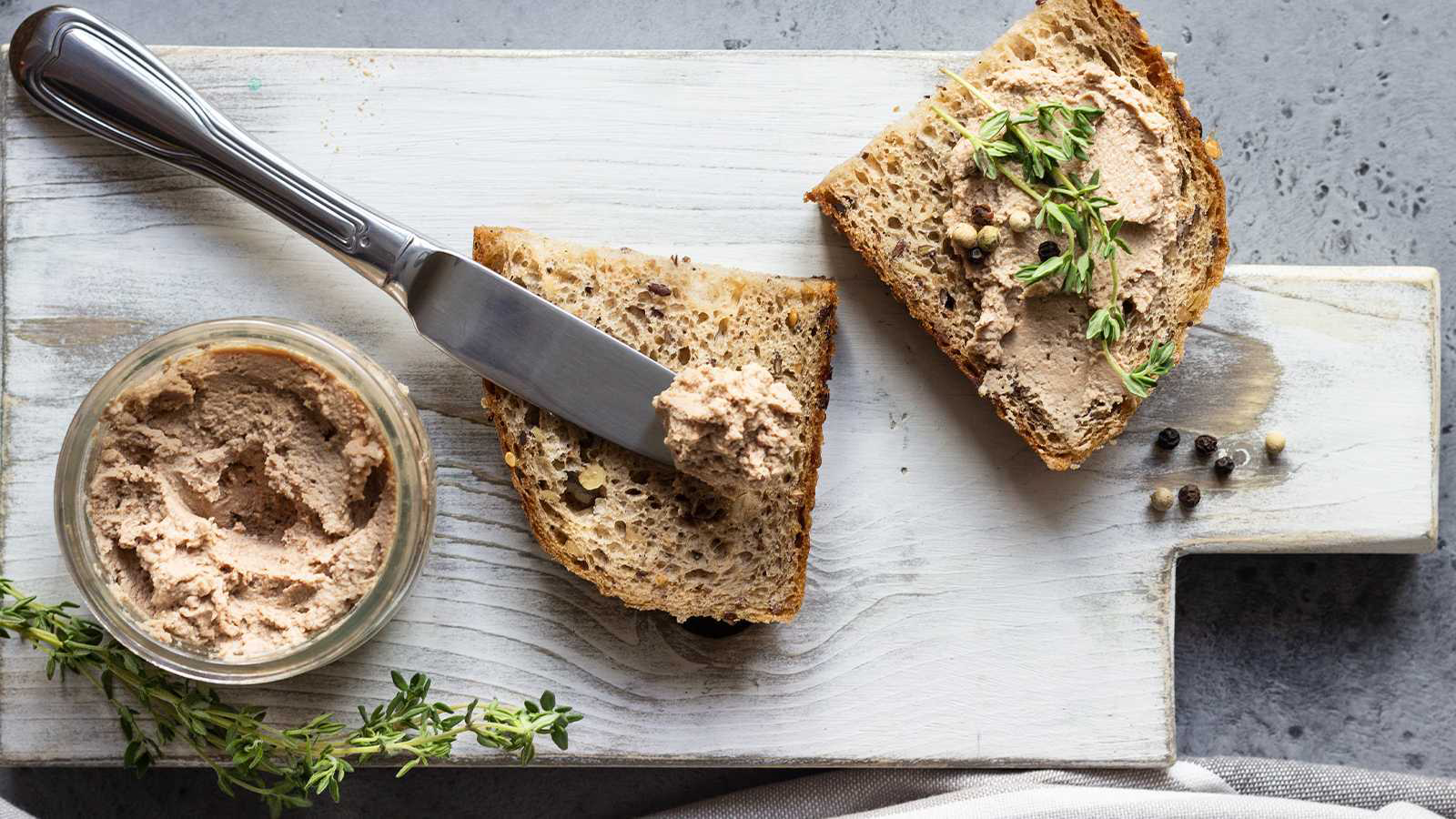Chopped liver is gross. Like, gefilte fish level gross. It’s not just the fact that it resembles cat food, but knowing that its origins have been traced to 11th-century Alsace-Lorraine where it began being made from the livers and fat of force-fed geese is enough for me to push the plate away.
So, the idea of mock chopped liver is really a welcome culinary evolution for me, even if the idea of creating a liver-like schmear is equally weird.
The name “mock chopped liver” comes from its resemblance in appearance and texture to the traditional liver-based pâté. However, the main ingredient in mock chopped liver is not actual liver but rather a combination of cooked or roasted vegetables, onions, hard-boiled eggs and walnuts.
During the mid-20th century, “mock liver” became a prominent item on the menus of New York City’s numerous “dairy restaurants,” which served as the meat-free counterparts to traditional delicatessens. Those keeping kosher could now enjoy a chopped liver-esque spread alongside an egg cream without having to make a choice between the two.
The Nosher celebrates the traditions and recipes that have brought Jews together for centuries. Donate today to keep The Nosher's stories and recipes accessible to all.
Mock chopped liver has become super popular over the years as more and more folks hop on the plant-based train or look for meatless alternatives. People dig it for a bunch of reasons, like caring for their health, the environment or sticking to ethical beliefs. It’s also a win-win for those with dietary restrictions or allergies to animal products.
Chef Cara Tannenbaum remembers indulging in real chopped liver when she was a kid on Long Island. As the years passed, the Tannenbaum family adopted a health-conscious approach to eating, prompting them to revamp their traditional schmaltz-filled chopped liver recipe. They embraced a vegetarian version, brimming with the delightful flavors of caramelized onions, mushrooms, peas and walnuts, creating a savory and wholesome alternative.
While the basic concept remains the same – using vegetables and nuts as a substitute for liver – the specific ingredients and cooking methods can differ based on regional preferences and individual tastes.
In Arthur Schwartz’s “Jewish Home Cooking: Yiddish Recipes Revisited,” he writes that onions are a defining flavor, in the sense that some dishes rely so heavily on onions that they wouldn’t taste Jewish without them.
“Chopped liver immediately comes to mind. In fact, I’d say mock chopped liver, the vegetarian version, relies mainly on fried onions to resemble the real thing.”
Gil Marks, another culinary expert, considers mushrooms to be another essential ingredient in creating this savory spread.
In the old school North American versions of vegetarian chopped liver, the typical ingredients included canned green peas or string beans, which were mashed together with fried onions and mushrooms (and occasionally eggplant) to create a creamy, taupe-colored spread.
“Some recipes included walnuts, hard-boiled eggs, or crushed crackers for heft. As far as photogenic dishes go, it wasn’t exactly a looker. But it was, and continues to be, deeply desirable,” writes Leah Koenig in Bon Appetit.
In more contemporary iterations of vegetarian chopped liver, cooks often opt for fresher ingredients while staying true to the traditional layering approach. This clever technique allows them to replicate the unctuous texture and delectable savory-sweet flavor that made the original dish so beloved.
In Aly Miller’s Nosher recipe for vegan chopped liver, she incorporates mushrooms and miso for a rich “faux gras.” While Nino Shaye Weiss, a food blogger in Vienna, incorporates caramelized onion and shots of Slivovitz to his as a nod to its Central European roots.
In Israel, vegetarian chopped liver is usually made with roast eggplant or summer squash, (particularly zucchini), hard-boiled eggs and carmelized onions. It is arguably more popular and available than regular chopped liver countrywide.
From its modest beginnings as a practical adaptation in Europe to its current global appeal, this vegetarian delight has become a timeless treasure in the world of Jewish cuisine. As we savor its savory legacy and modern adaptations, we celebrate mock chopped liver’s ability to honor tradition while embracing new flavors and culinary adventures.



